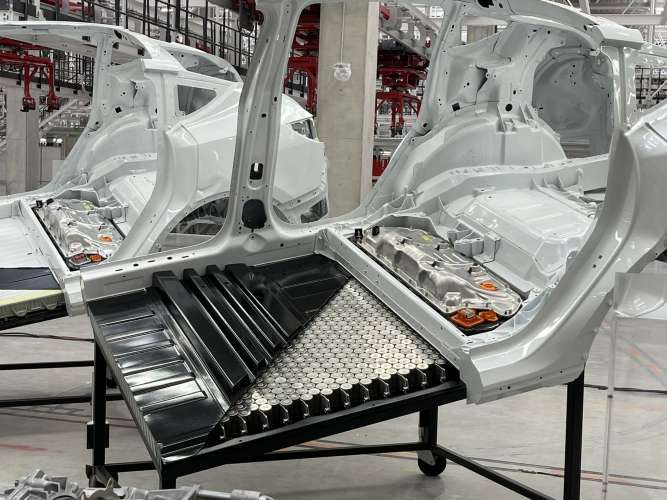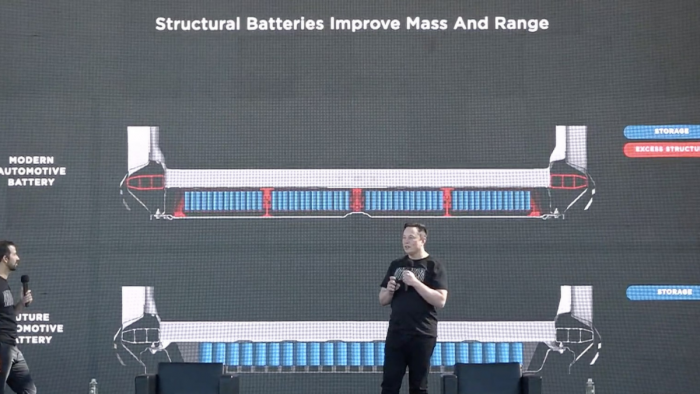One of the great challenges of the industry as related to electric car is how to address the problem of degradation, commonly suffered by lithium-ion batteries when storing energy. Now a team of researchers from the University of Cambridge has just discovered the reason why a battery loses effectiveness throughout its useful life. The discovery will increase the useful life and performance of batteries equipped with this technology.
The research carried out by the British University basically discredits many other studies published so far on the movement of lithium ions within the battery, which up until now had been considered to be stored uniformly in individual, active particles of the material. This investigation reveals that its storage is actually variable and depends on the state of the discharging cycle.

More specifically the team tracked with a microscope how light interacts with active particles during lithium battery operation with a nickel-rich cobalt manganese oxide (NMC) cathode; that is, in a typical ternary battery regularly used nowadays in many different electric vehicles. This technique allowed them to observe differences in lithium storage during the charge and discharge cycles.
"This is the first time that this non-uniformity of lithium storage in individual particles has been directly observed", Alice Merryweather, one of the researchers from Cambridge's Yusuf Hamied Department of Chemistry, said. "Real-time techniques, such as ours, are essential to capture this effect while the battery is in full charge and discharge cycle".
Combining experimental observations with computer modeling, the researchers found that the non-uniformity of lithium is caused by drastic changes in the diffusion rate of lithium ions at the NMC cathode during the charge-discharge cycle. Specifically, lithium ions diffuse slowly into fully "lithiated" NMC particles, a process that is significantly enhanced once some lithium ions are extracted from these particles, the researchers say.

Furthermore, the lithium heterogeneity observed at the end of discharge cycle establishes one of the reasons why nickel-rich cathode materials typically lose around 10% of their capacity after the first charge-discharge cycle. This finding is significant, as the industry standard used to determine whether or not a battery should be removed from an electric vehicle puts the degradation limit at a 20% loss of its overall capacity, according to Chao Xu, a scientist at Shanghai-Tech University who has also supported the research while working at Cambridge University.
The team made their observations with the help of a model capable of accurately predicting lithium distributions. It also captured the degree of heterogeneity seen in the experiments, said Shrinidhi Pandurangi, another member of the research team from Cambridge's Department of Engineering. "Our model provides information about the range in which the diffusion of lithium ions in NMC particles varies during the early stages of charging", he added.
When the battery is near the end of the discharge cycle, the surfaces of the active particles become saturated with lithium, while their nuclei are lithium deficient; this diffusion of lithium results in the loss of reusable lithium and in reduced capacity. "These predictions are key to understanding other battery degradation mechanisms, such as particle fracture", Pandurangi said. This finding could help develop future batteries in which lower capacity loss and therefore higher efficiency can be guaranteed.

The research and its results have been published in "Joule". According to its authors, these studies may be particularly useful for many different automakers in the development of future batteries for their electric vehicles. In fact, the use of NMC cathodes is the most common choice in most electric vehicles on the market as of today, even though scientists do not fully understand yet how battery performance is related to the transportation of lithium inside the cathode. Having discovered the key to the degradation process, the Cambridge research team is now looking for new approaches to increase energy density and to extend the lifespan of lithium-ion batteries.
Source: sciencedirect
All images courtesy of Tesla Inc.
Nico Caballero is the VP of Finance of Cogency Power, specializing in solar energy. He also holds a Diploma in Electric Cars from Delft University of Technology in the Netherlands, and enjoys doing research about Tesla and EV batteries. He can be reached at @NicoTorqueNews on Twitter. Nico covers Tesla and electric vehicle latest happenings at Torque News.












